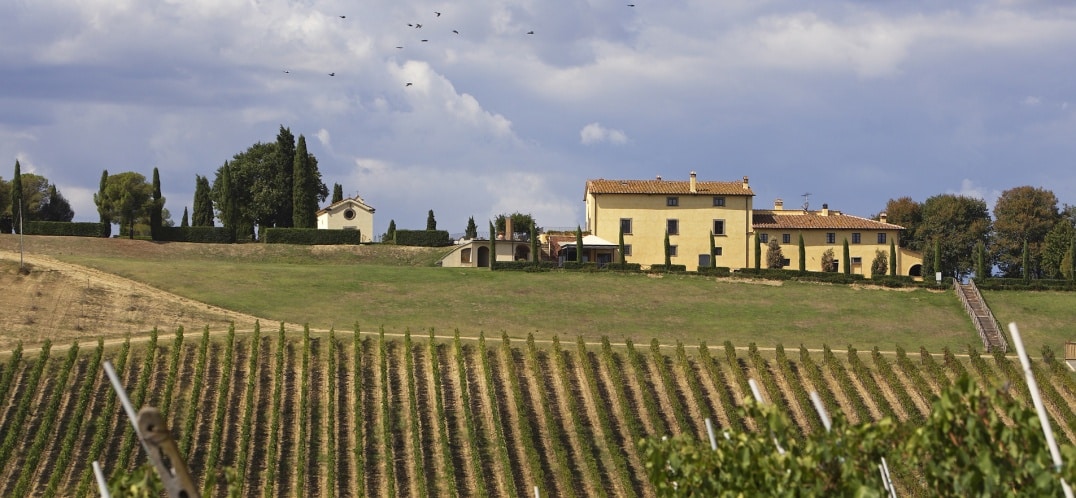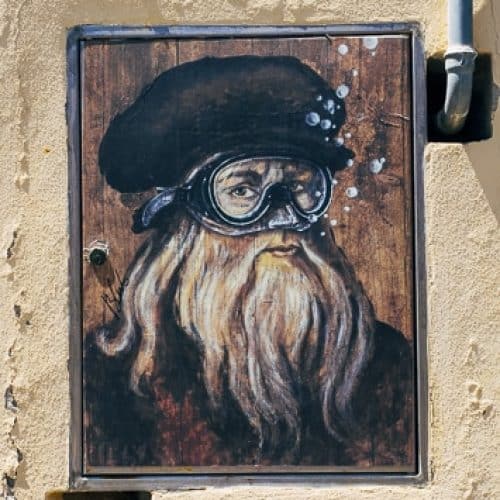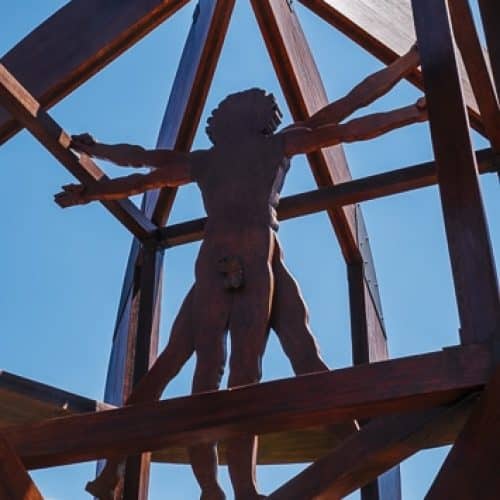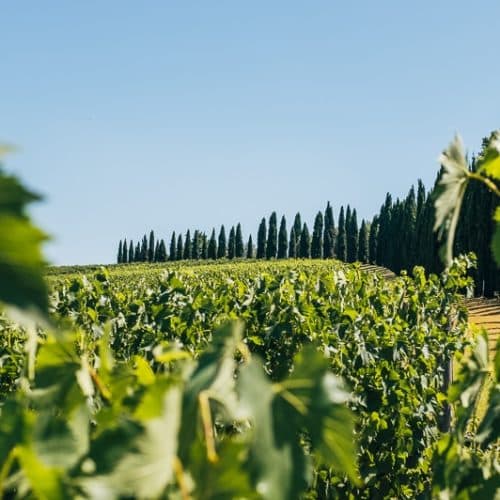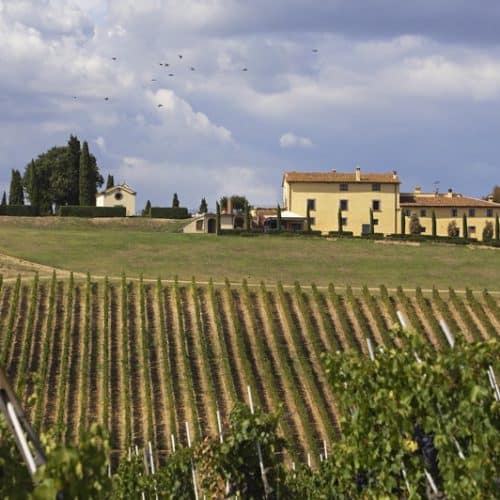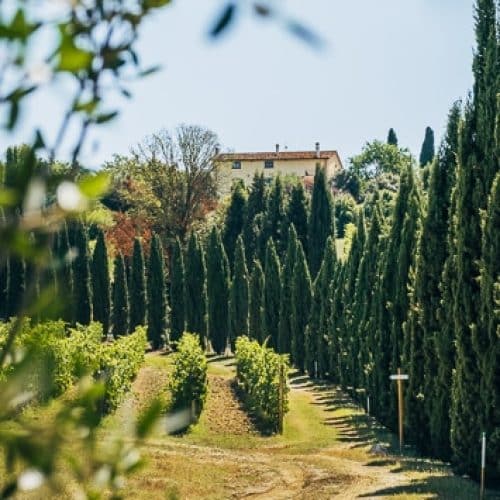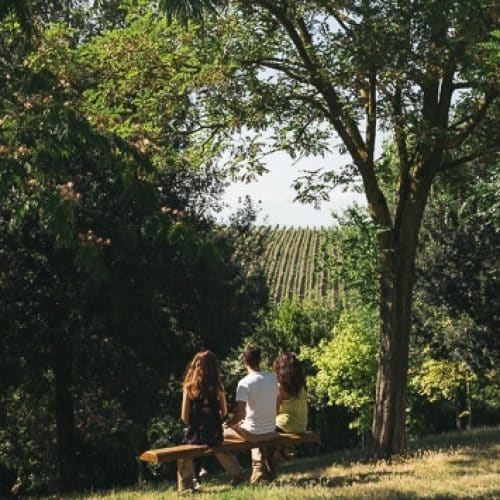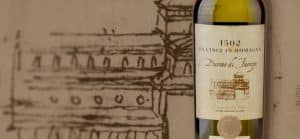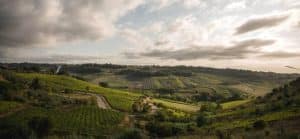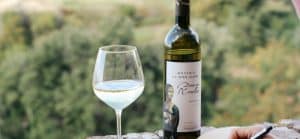The village of Vinci
Leonardo is present everywhere in Vinci and it is easy to imagine the Genius spending his childhood in these places full of charm and suspended in time. The village, now completely dedicated to Leonardo, offers a full historical and artistic immersion into his life and multifaceted artistic production.Street art and artist installations
A stroll through the streets of the village catapults you into a dimension full of inspiration, art, science and nature. There is a lot to see even in the open air. To begin with, in Piazza del Castello there is a huge sculpture by the artist Mario Cerioli which reproduces Leonardo’s Vitruvian Man, the most famous drawing in the world, while in Piazza della Libertà there is the Cavallo di Leonardo, a piece by the artist Nina Akamu, inspired by the unfinished equestrian monument dedicated to Francesco Sforza. The fact that Leonardo is a pop icon that still fascinates even after 500 years after his death is shown in the underwater themed street art of Blub who put a snorkel and mask on the Mona Lisa, and on other works of Leonardo scattered through the streets of center.The Museo Leonardiano and Leonardo’s birthplace
Among the things to visit in the village of Vinci is the Museo Leonardiano, one of the most complete collections of Leonardesque machine models and inventions accompanied by the drawings with which Leonardo conceived and designed them. From war machines and flying machines, which imitate the movement of the wings of birds, and wagons, mechanical watches, and weaving machines. A few kilometers from the center, in the hamlet of Anchiano, you’ll find Leonardo’s birthplace (la casa natale di Leonardo). Here, a multimedia exhibition explores a more intimate and familiar Leonardo, linked to the territory where he spent his childhood, which determined his gaze and disposition, both human and artistic.The Vinci countryside and passion for wine
Leonardo has an agricultural soul and his whole life and works are pervaded by a deep and passionate love for nature. The hills of Vinci influenced both Leonardo’s life and the painting technique used for his rural landscapes. Leonardo walked through the vineyards, breathed the scents of the countryside and discovered his passion for viticulture. The familiar, daily and profound relationship that has always linked Leonardo to wine derives from his upbringing in a countryside surrounded by vineyards.
Villa da Vinci, Leonardo’s panoramas
Villa da Vinci is an estate in Tuscany that includes a medieval village from 1152, surrounded by lush vineyards that belonged to Leonardo’s family. Today, they extend for 75 hectares and are used to produce the wines of the Villa da Vinci collection. The name of the wines is that of the land owned by the Leonardo family in the Vinci countryside – historical, original and ancient. The Villa is a multifunctional space consisting of a historic home and wine resort and the Museo Leonardo and the Renaissance of Wine.
Museo Leonardo and the Renaissance of Wine
The Museum documents and deepens Leonardo’s passion for agriculture, in particular, for the cultivation of grapes and the production of wine which played an important role in his studies and works. It was only in Vinci that Leonardo developed his curiosity for agricultural machines: in addition to designing tools and oil mills, many references to agriculture and farmers are present in his fables and prophecies, rebuses and allegories.
The exhibition itinerary of the Museo Leonardo and the Renaissance of Vinci’s Wine explains the role of agriculture in Leonardo’s life and studies through the reproduction of his inventions, numerous archival documents, archaeological references related to the territory of Vinci and the viticulture of the area.
Ideal walks and special tastings
To follow the paths immersed in nature that inspired Leonardo in his most famous masterpieces, hiking routes and walks suitable for everyone wind through the vineyards and woods surrounding Villa da Vinci, starting from the Museo Leonardo Museum and the Renaissance of Wine. Three different thematic itineraries unfold in the surroundings, each with a special panorama: the valley, the vineyards and the woods. At the end of each route, it’s possible to taste and buy the wines of Cantine Leonardo da Vinci, inspired by the Tuscan Genius.
